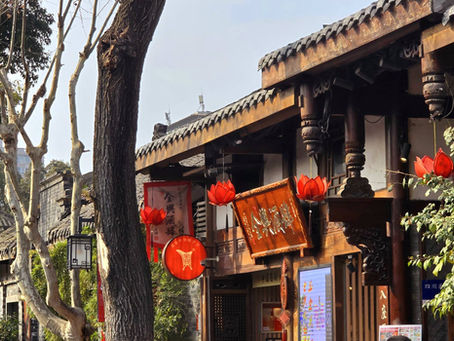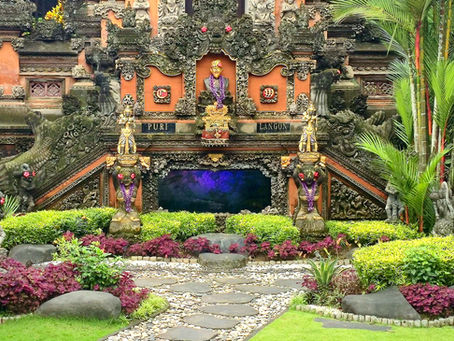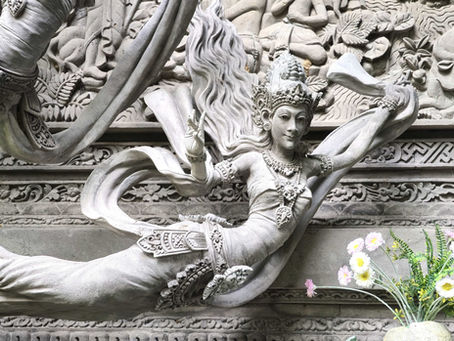top of page

GLOBAL SHANANIGANS

Search


Sacred Tombs of The Pagoda Forest
Located at the base of Mount Shaoshi in Henan Province, the Pagoda Forest at Shaolin Temple is a sacred necropolis within the broader monastery complex. With its origins tracing back to 618 AD during the Tang Dynasty, the forest is home to over 240 stone and brick pagodas, each serving as a tomb or memorial for esteemed monks, abbots and martial art masters.
Shannon


Kuanxiangzi Alley & The Blood Lantern Widow
Tucked into the vibrant heart of Chengdu, the capital of Sichuan Province, Kuanxiangzi Alley is a rare remnant of Qing Dynasty urban design, its origins reaching back over 300 years. Established in the late 17th century, the alley was constructed over an ancient military garrison and gradually developed into an elite residential area.
Shannon


Kanto Lampo Waterfall
Shaped by both chance and design, one of Bali’s most unexpected natural wonders is Kanto Lampo Waterfall. Unlike the island’s ancient cascades that have poured down jungle cliffs for centuries, this waterfall is a relatively recent creation. In the early 2010s, adjustments to a local irrigation system redirected water across a rocky cliffside and over time the flow carved its way over volcanic stone, giving rise to the unique cascade we see today.
Shannon


Ubud Water Palace
Built in honour of its namesake Saraswati, the Hindu goddess of knowledge, music, art, wisdom and learning, Pura Taman Saraswati is a graceful water temple nestled in the heart of downtown Ubud. This sacred site blends spiritual reverence with classical Balinese aesthetics, offering a peaceful retreat just steps away from the town’s busy centre.
Shannon


Tirta Gangga Water Palace
Nestled in the eastern highlands of Bali, in the quiet village of Ababi at the foot of Mount Agung, Tirta Gangga is a royal water palace steeped in beauty and spiritual reverence. Commissioned by the last Raja of Karangasem in 1946, this sacred estate pays homage to Balinese Hindu devotion. Its name, meaning “blessed water from the Ganges,” reflects its role as both a royal retreat and a site for spiritual purification and ceremonial bathing.
Shannon


Bao Lac
Bảo Lạc Town, near Vietnam’s northern border with China, hides a blood-soaked past beneath its calm surface. For centuries, this rugged land was home to fiercely independent Tày, Nùng, Hmong, and Dao tribes who lived and died resisting Vietnamese and Chinese domination. Imperial forces repeatedly tried to crush their autonomy, but the mountains ran red as rebellion flared again and again.
Shannon


Lempuyang Temple - Heaven's Gate
Standing proudly at 1175 metres above sea level, on the peak of Mount Lempuyang, this ancient temple complex is among Bali’s oldest and most revered, believed to predate most Hindu temples on the island. Although there is some confusion about the site’s exact age, the establishment of temples here stretches back at least a millennium.
Shannon


Puri Langon Temple
Puri Langon is a privately owned royal compound located in central Ubud. It is the personal residence of Tjokorda Ngurah Suyadnya, better known as Cok Wah, a respected figure in the Ubud royal family. Though it remains a functioning private home, Puri Langon is open to the public free of charge, offering rare access to a lived-in royal space that continues to serve spiritual and cultural functions within the community.
Shannon


Hanoi Old Quarter
A living, breathing time capsule, Hà Nội Old Quarter is a tapestry woven from centuries of colonial exploitation, Confucian rituals, dynastic collapses and wartime destruction. Despite relentless modernisation and gentrification, the Old Quarter remains defiantly alive. It preserves not just Hà Nội’s heritage but the very essence of Vietnam’s ability to adapt and endure.
Shannon


Batara Kala - Devourer of Time and Light
Batara Kala, in Balinese mythology, is the monstrous deity of time, destruction and the underworld. He's a god born not from light but from the uncontrolled lust of the supreme god Shiva (Siwa). In one chilling version of his origin, Batara Kala is conceived during a moment of cosmic imbalance, when Shiva’s spilled seed, filled with uncontrollable rage and passion, falls to earth and takes form.
Shannon


Thailand's Golden Triangle
The Golden Triangle snakes along the borders of Thailand, Laos and Myanmar, a land as beautiful as it is brutal. The Mekong River twists like a silver serpent through shadowed valleys, past isolated villages whose fields once fed a global hunger for heroin. This rugged, turbulent region earned its infamous name from centuries of opium fueled violence and despair. More than a crossroads, the Golden Triangle is a nexus of greed, pain and heartbreak.
Shannon


Bhoma - Bali's Protector and Judge
In the architectural language of Balinese temples, Bhoma statues are not merely decorative but play a protective and symbolic role. Bhoma is derived from the ancient Sanskrit word bhūma, meaning “Earth” and is considered a guardian spirit linked to fertility, the forest and subterranean realms. Usually mounted above temple gates or embedded within sacred water features, these fierce, leaf entwined figures serve as guardians of spiritual boundaries,
Shannon


Ganesh - The Remover of Obstacles
In the moss veiled temples of Bali, Ganesha is far more than a familiar Hindu icon, he is a living force who moves between light and shadow. Though his roots lie in Indian Hinduism, Bali’s Ganesha (also known as Batara Gana) has taken on new dimensions, shaped by animist spirits, local rituals and the Balinese understanding of cosmic balance.
Shannon


Taman Dedari - Dine Among the Divine
Born from the legend of Resi Markandeya’s vision of angelic dancers over the Ayung River, Taman Dedari blends myth and appetite in equal measure. Here, guests savour Balinese flavours in a riverside setting guarded by monumental stone Dedari, the celestial maidens of old.
Shannon


Hiroshima Castle - Echoes of an Empire
Rising from the flatlands of western Japan, Hiroshima Castle was a powerful nerve centre built by Mōri Terumoto during an age of shifting allegiances and ruthless ambition. With its broad moat and imposing stone walls, the castle was less about isolation and more about control, a symbol of calculated authority in a time of near constant war.
Shannon


The Birth of Apsaras - Daughters of the Ocean of Milk
Apsaras, the celestial nymphs of Hindu and Buddhist mythology, are revered for their unparalleled beauty, graceful movements and mastery of dance and music. Adorned with golden skin, fragrant hair and flowing garments, they appear throughout ancient texts as divine attendants in the heavenly courts of gods like Indra, where they serve as entertainers and symbols of spiritual and aesthetic refinement.
Shannon


Bailong Elevator - In the Shadow of Dragons
Rising like a gleaming spine along the raw sandstone cliffs of Zhangjiajie National Forest Park in China’s Hunan Province, the Bailong Elevator, also known as the "Hundred Dragons Elevator" is both a marvel of modern engineering and a looming monolith that stirs ancient fears. Piercing 326 metres into the sky, it is the tallest outdoor elevator in the world.
Shannon


Hoàn Kiếm Sword Lake and the Turtle Tower
Nestled in Hanoi’s bustling Old Quarter, Hoàn Kiếm Lake offers a serene escape from the city's chaos. This natural freshwater lake, stretching 700 metres across 12 hectares, has been a cultural and historical anchor for centuries, its origins possibly predating Hanoi itself by over a thousand years.
Shannon


The Forgotten History of Đồng Văn
Nestled high in the Dong Van Karst Plateau of Ha Giang Province, Đồng Văn Ancient Town carries within its narrow stone-paved streets a haunting blend of history, war and legend. This remote outpost near the Chinese border has long served as a cultural and military crossroads. The town itself is over a century old, with well-preserved architecture reflecting a fusion of Vietnamese, Chinese and French colonial influences.
Shannon


Carved in Time - Khuổi Ky Stone Village
Known for its striking stone architecture and deeply rooted cultural traditions, Khuổi Ky’s origins trace back over 400 years and was established by the ancient Tay ethnic tribe, after 2,000 years of hardship and migration from the southern regions of China and Cambodia. The Tay people, one of Vietnam’s oldest and most culturally rich ethnic groups, are believed to have journeyed across generations, seeking fertile land and spiritual sanctuary.
Shannon
bottom of page